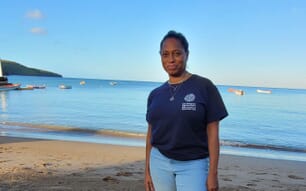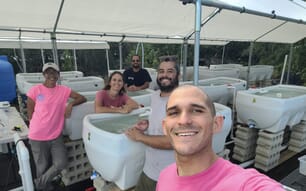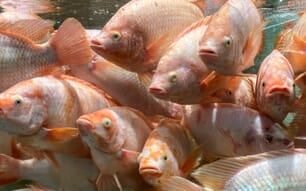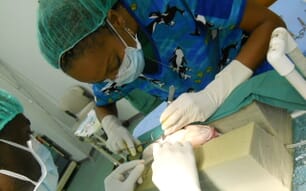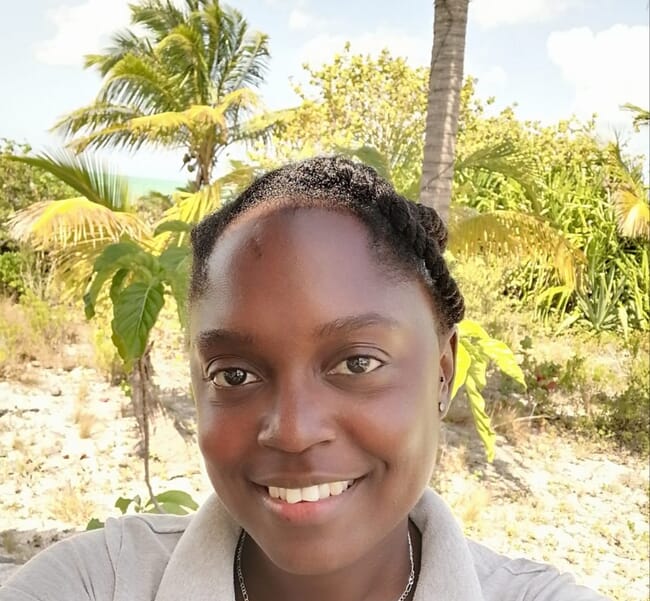
As part of her role at The Island School, Avril coordinates classes on aquaculture-related topics for high school students and visiting programmes
What inspired you to start in aquaculture?
I’ve always had a love for the outdoors and natural sciences, in particular marine life, and was formally introduced to aquaculture during my undergraduate studies in environmental and natural resource management, with a minor in marine biology. After that I continued with marine studies at postgraduate level on a scholarship to Fiji. It was then I decided to learn more about aquaponics, which became my specialty.
Briefly describe your aquaculture career
I am currently employed at The Island School in Cape Eleuthera in the Bahamas, as an aquaponics system engineer. I manage a medium-scale aquaponics farm and I am the coordinator of classes for high school students and visiting programmes on aquaculture-related topics. Before this, I taught several classes at the institute and was the assistant manager at the Bahamas Agriculture and Marine Science Institute (BAMSI) in Andros, which offers associates degrees in marine science and aquaculture and has a commercial aquaponics farm.
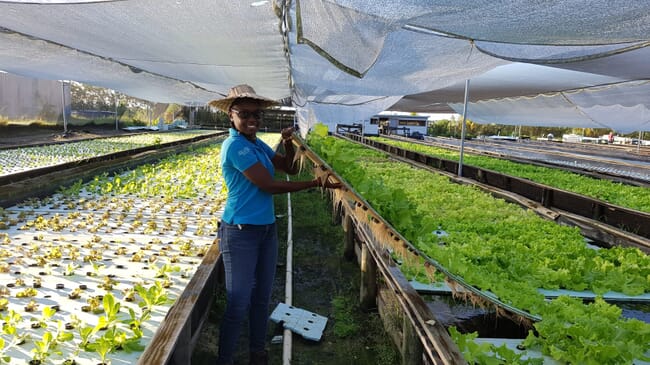
A gravity flow system helps to reduce costs by passively moving nutrient-rich water from the fish tanks, through a clarifying tank, biofilter, and into shallow growbeds where up to 70kg of lettuce is harvested every month for the school community
While in Fiji, I worked briefly with the German Development Organization (GIZ), where I focused on women in aquaculture (particularly the mariculture of pearl oysters). I also worked with the Food and Agriculture Organization of the United Nations for a year and a half, based in Dominica. There I assisted with the revitalisation of the aquaculture sector, which had been badly damaged by Hurricane Maria in 2016. This work included rebuilding a prawn hatchery, building demonstration aquaponics and hydroponics systems, conducting training in aquaponics and seamoss (Gracilaria sp.) farming. I also developed a five-year aquaculture management plan for the country.
Can you summarise your current work?
I currently teach a research class to high school-aged students where they learn about aquaponics and conduct mini projects associated with my work. The last cohort of students carried out a study comparing two different types of hydroponics. I manage the aquaponics systems, which are used to supply The Island School community with 60 to 70kg of lettuce and 50 to 60kg of tilapia fillets on a monthly basis. The community has three meals daily on campus and the produce from the farm goes directly to the kitchen. I am also a research scientist.
Fish feed costs are expensive and I wish to solve this problem by examining the potential for the use of local ingredients to make on-farm fish feeds for tilapia. I hope that my research in on-farm aquafeed production can be of benefit to tilapia farmers within the Caribbean community. Another area of research that I am interested in is mariponics (a term I’m hoping I can make popular, which refers to salt-water aquaponics). I am investigating the potential of various marine and coastal edible plants and Bahamian culturally relevant fish species, such as the spiny lobster and Nassau grouper.
How will your work contribute to the development of aquaculture in your country and the Caribbean region?
The development of feeds for freshwater aquaculture species using locally available ingredients has large potential to assist with the growth of aquaculture within the Caribbean region. Currently, the Caribbean falls short on the global spectrum of aquaculture production and one of the main reasons is the high input costs, of which feed is one of them. Lowering feed costs would make aquaculture more accessible to small and medium farmers, as access to quality feed is limiting tilapia production in the Caribbean region.
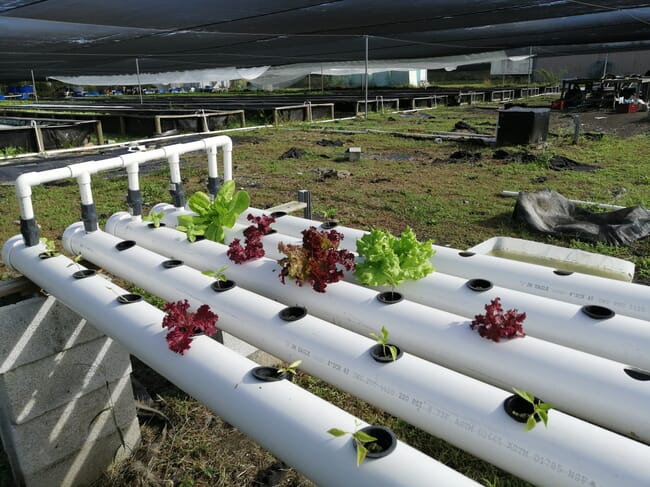
Students undertake research projects to learn about different types of hydroponic systems and determine the feasibility of aquaponics as a low-cost food production system for the region
I would also like to optimise the production of gracilaria (Gracilaria sp.) and eucheuma (Eucheuma sp.) algal species as a source of ingredients for fish feeds. These marine algae are well known throughout the Caribbean as seamoss, or Irish moss, which is made into a beverage with milk and honey. Research on scaling the production of these species can become a source of income for coastal communities.
What do you enjoy most about your work?
The look of satisfaction on students’ faces when they accomplish a project, or when they learn something fascinating, like converting fish waste into fertiliser for crops in aquaponics.
What has been your greatest achievement working in aquaculture to date?
My greatest achievement was assisting the government of the Commonwealth of Dominica, with the support of FAO, to rebuild their prawn hatchery. It had been a thriving industry up until the early 1990s and was well-known throughout the region. It experienced a slow decline and then an ultimate halt when the hatchery that supplied farmers was destroyed in Hurricane Maria in 2016. It was quite the accomplishment when we were able to reopen a hatchery in Dominica in September 2020 which was able to supply farmers with larvae for ponds.
What advice would you give to women looking to start a career in the sector?
I try to encourage all people – but especially women – to explore interests in aquaculture. Aquaculture ventures can be very rewarding and can be done parallel to a full-time job as a means of supplementing income.
What would be your dream role in aquaculture?
My dream role would be to own fresh water fish and prawn farms which produce hydroponically-grown vegetables. My farms would not only supply food but also act as a model and teaching farm for interested persons, as I do enjoy sharing and gaining knowledge. I would also like to own a fish feed mill producing feed to supply local and regional farmers. Realising this dream would require an even deeper understanding of all of these operations, and also the obvious resources – financial, human and infrastructural.

